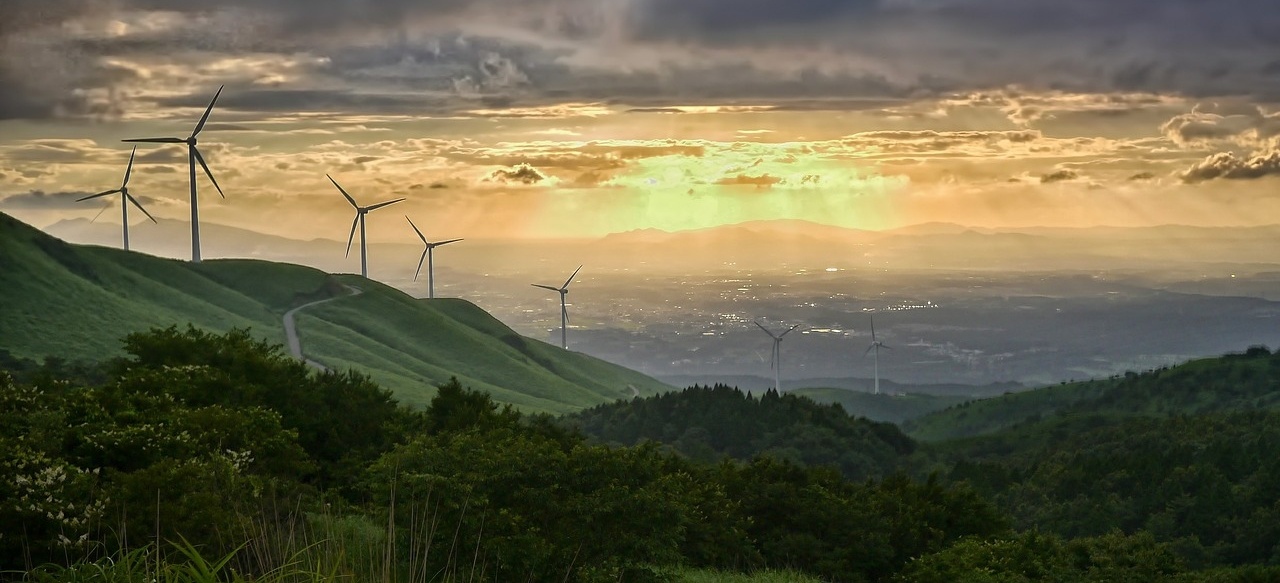
NREL says that wind could become the country’s “dominant” source of electricity with “near-future” technology. Slate, the online magazine, likens the present-day need for more long-distance transmission lines to the need for transcontinental railroads more than 150 years ago. And do you know which sector GTM Research has identified as the “most significant solar growth market in the U.S.,” growing 5X this year alone? Hint: it’s not utility-scale, and it’s not rooftop. These are some recent developments in renewable energy, and we’ve been taking notes.
The National Renewable Energy Laboratory (NREL) recently released a report that finds wind is poised to become a dominant – and possibly the primary – source of electricity in the U.S., with the potential to supplant both natural gas and coal. Greentech Media writes that the report shows that “with current technology, wind turbines could generate more than enough energy at 55 percent capacity factor (CF) to power the entire U.S. However, the real stunner is that near-future turbine technology (i.e., 140-meter towers) could boost that to 65 percent CF. With the current national average wind CF at about 33 percent, this represents a near doubling.”
At 65 percent CF, there is “enough suitable land available to site turbines with 1.5 terawatts of capacity. At 55 percent CF, there is enough land with sufficient resource to site roughly 3 times that, for a total of about 4.5 terawatts.” By way of comparison, the article notes that in 2012 the average U.S. electrical net generation was less than 0.5 terawatts. The article does note that, “even with higher CF, wind power is not dispatchable and therefore will not eliminate the need for other sources.” Still, the author concludes, “the only remaining barrier to wind becoming the nation’s largest energy source is transmission capacity.”
Speaking of transmission capacity, Slate’s recent article Wind Energy Is Having a Railroad Moment asks, “How do you get wind power captured in Oklahoma to consumers in Tennessee? By evoking the industrial revolution.”
“Just as oil needs pipelines and coal needs railroads, wind power needs transmission lines to reach cities,” and the article argues that the renewable energy growth spurred by incentives has in turn driven significant private investment. The article cites a report by the Edison Electric Institute that highlights “some $47.9 billion worth of transmission lines in the works through 2025,” finding that “about $22.1 billion in funds will be spent on transmission projects aimed at integrating renewable energy into the grid.”
“The wind boom has also inspired people and businesses to do something they didn’t do much before 2008 – think big and funnel private capital into infrastructure projects,” writes author Daniel Gross. “And when private firms erect new platforms that encourage other private companies to invest and build, that’s a form of economic stimulus worthy of a few lofty railroad metaphors.” All aboard!
In June, GTM Research released a report about the U.S. community solar market, ”peg(ging) it as the most significant solar growth market for the United States.” In US Community Solar Market to Grow Fivefold in 2015, Top 500MW in 2020, GTM Research states that while just 66 MW of community solar was installed as of 2014, “…by 2020, community solar in the United States will be an annual half-gigawatt opportunity, with an expected compound annual growth rate of 59 percent for 2015-2020.”
GTM says that four states – California, Colorado, Massachusetts, and Minnesota – will account for more than half of the community solar developed over the next two years, but that the shared solar concept will spread. According to this map from Shared Renewables, “13 states and the District of Columbia have shared renewables policies in place, and many more are considering programs to expand consumer access to clean energy.”
The majority of these programs are based on projects 1 MW or less in size, which while suitable for residential and small business use, may not be large enough to meet the needs of bigger corporate customers. Some notable exceptions to this include California’s Shared Access Green Tariff program, and Rocky Mountain Power’s proposed Subscriber Solar Program in Utah.
Earlier this year, AEEI produced Competitiveness of Renewable Energy and Energy Efficiency in U.S. Markets. This report shows that renewable energy and energy efficiency are competitive resources in today’s marketplace that will not only be cost-effective mechanisms for CPP compliance but should also be expected to grow strictly on the basis of competitiveness.
